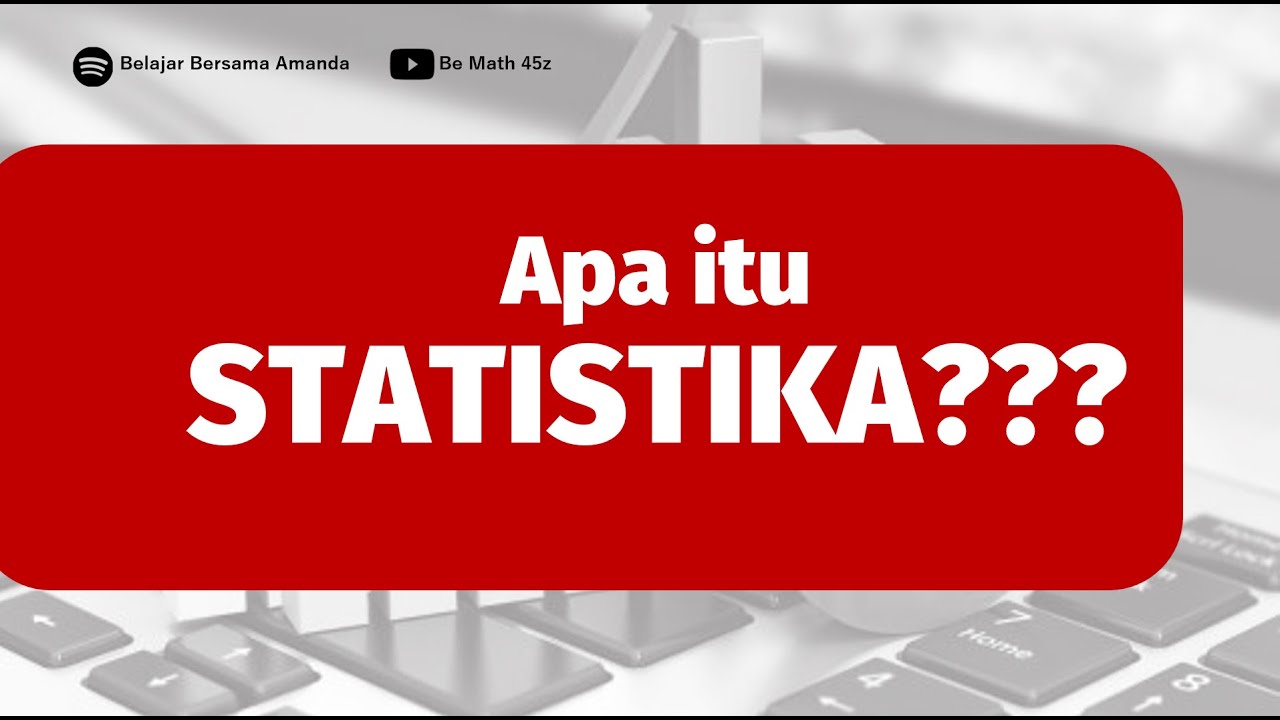ELT573 AULA SLIDES TEORICA INTRODUÇÃO ESTATÍSTICA UNI MULTIVARIADA ACCN MN FINAL
Summary
TLDRThis introductory lecture on statistical learning, part of the Federal University of Viçosa's Artificial Intelligence program, covers key statistical concepts. Professor Moisés outlines the importance of understanding population versus sample, descriptive and inferential statistics, and the significance of measures of central tendency and dispersion. Through practical examples, such as temperature variations, the lecture highlights the need for both average values and measures of variation, like variance and standard deviation. The discussion extends to multivariate analysis, including correlation and covariance, setting the stage for practical applications in prediction, classification, and pattern recognition.
Takeaways
- 📚 Welcome to the 'Introduction to Statistical Learning' course, part of the AI and Computational program at the Federal University of Viçosa.
- 👨🏫 The instructor, Moisés, has a strong academic background in statistics and aims to bridge theory with practical applications.
- 🔍 The course focuses on methodologies for solving problems related to pattern recognition, classification, and prediction.
- 🏛️ Understanding the difference between a population (all individuals with a common characteristic) and a sample (a subset of the population) is crucial.
- 📊 The course emphasizes descriptive statistics, which summarize data without making probabilistic assumptions.
- 📈 Measures of position, such as the arithmetic mean, indicate central tendency in data analysis.
- 📉 Variance and standard deviation are key measures of dispersion that describe how data points spread around the mean.
- 🧮 The lesson introduces multivariate analysis, involving multiple variables measured for each observation.
- 📐 Covariance assesses how two variables change together, while correlation standardizes this measure, providing insight into their relationship.
- 🤔 Students are encouraged to actively engage with examples and prepare questions for synchronous sessions to enhance their learning.
Q & A
What is the primary focus of the course on statistical learning?
-The primary focus is to present methodologies for solving problems in pattern recognition, classification, and prediction using statistical methods.
Who is the instructor of the course and what are his qualifications?
-The instructor is Moisés, who holds a Bachelor's degree in Statistics, a Master's degree in Applied Statistics and Biometry, and a Doctorate in Statistics and Agricultural Experimentation.
What are the main differences between a population and a sample?
-A population is defined as a set of individuals sharing a common characteristic, while a sample is a subset of that population used for analysis.
What are the two main branches of statistics mentioned in the lecture?
-The two main branches are descriptive statistics, which describes data through measures and graphs, and inferential statistics, which generalizes results from a sample to a population.
What is the mean, and why is it important in statistics?
-The mean is the average value around which data tends to concentrate, providing a central point for data analysis and decision-making.
How does variance help in understanding data distribution?
-Variance measures the dispersion of data points around the mean; a higher variance indicates greater variability among data points.
What are the implications of relying solely on the mean for decision-making?
-Relying solely on the mean can lead to misleading conclusions, as it does not account for the variability in the data.
What is the difference between covariance and correlation?
-Covariance measures how two variables vary together, while correlation standardizes this measure, providing a value between -1 and 1 that indicates the strength and direction of the relationship.
What is a covariance matrix, and why is it useful?
-A covariance matrix displays the variances of each variable on the diagonal and the covariances between pairs of variables off-diagonal, allowing for a comprehensive view of relationships among multiple variables.
What does a correlation coefficient close to 1 indicate?
-A correlation coefficient close to 1 indicates a strong positive association between two variables, meaning as one variable increases, the other tends to increase as well.
Outlines

This section is available to paid users only. Please upgrade to access this part.
Upgrade NowMindmap

This section is available to paid users only. Please upgrade to access this part.
Upgrade NowKeywords

This section is available to paid users only. Please upgrade to access this part.
Upgrade NowHighlights

This section is available to paid users only. Please upgrade to access this part.
Upgrade NowTranscripts

This section is available to paid users only. Please upgrade to access this part.
Upgrade NowBrowse More Related Video

[PART 1] STATISTIKA PENDIDIKAN: MENGENAL DATA

Apa itu Statistika?

Konsep Dasar Pengujian Hipotesis

Importance & Limitations of Statistics - Introduction | Class 11 Economics Chapter 1 | CBSE 2024-25

STATISTIKA: Ukuran gejala pusat dan ukuran letak 1

Introduction to Spatial Statistics #GIS #Maps #Data Science
5.0 / 5 (0 votes)